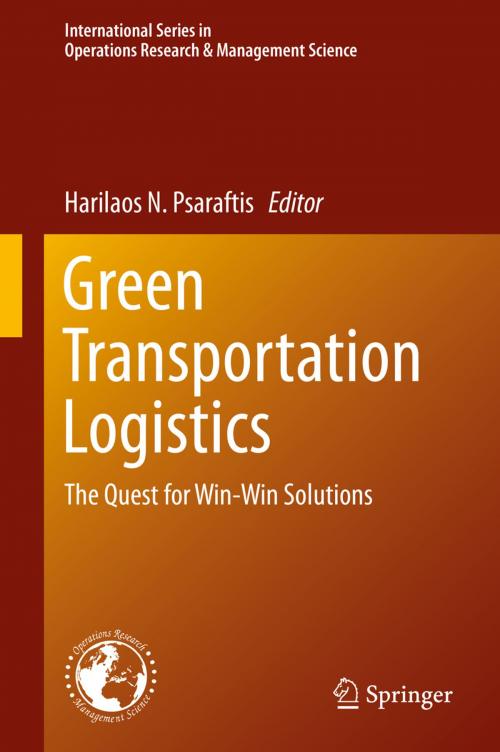Green Transportation Logistics
The Quest for Win-Win Solutions
Business & Finance, Management & Leadership, Operations Research, Nonfiction, Science & Nature, Technology| Author: | ISBN: | 9783319171753 | |
| Publisher: | Springer International Publishing | Publication: | July 13, 2015 |
| Imprint: | Springer | Language: | English |
| Author: | |
| ISBN: | 9783319171753 |
| Publisher: | Springer International Publishing |
| Publication: | July 13, 2015 |
| Imprint: | Springer |
| Language: | English |
This book examines the state of the art in green transportation logistics from the perspective of balancing environmental performance in the transportation supply chain while also satisfying traditional economic performance criteria. Part of the book is drawn from the recently completed European Union project Super Green, a three-year project intended to promote the development of European freight corridors in an environmentally friendly manner. Additional chapters cover both the methodological base and the application context of green transportation logistics.
Individual chapters look at the policy context; the basics of transportation emissions; Green Corridors basics; the concept of TEN-T (Trans-European Network); Benchmarking of green corridors; the potential role of ICT (Information and Communication Technologies); Green vehicle routing; Reducing maritime CO2 emissions via market based measures and speed and route optimization; Sulphur emissions; Lifecycle emissions; Green rail transportation; Green air transportation; Green inland navigation and possible areas for further research.
Throughout, the book pursues the goal of “win-win” solutions and analyzes the phenomenon of “push-down, pop-up”, wherein a change in one aspect of a problem can cause another troubling aspect to arise. For example, speed reduction in maritime transportation can reduce emissions and fuel costs, but could require additional ships and could raise in-transit inventory costs. Or, regulations to reduce sulphur emissions may ultimately increase CO2 elsewhere in the supply chain. The book takes stock at the various tradeoffs that are at stake in the goal of greening the supply chain and looks at where balances can be struck.
This book examines the state of the art in green transportation logistics from the perspective of balancing environmental performance in the transportation supply chain while also satisfying traditional economic performance criteria. Part of the book is drawn from the recently completed European Union project Super Green, a three-year project intended to promote the development of European freight corridors in an environmentally friendly manner. Additional chapters cover both the methodological base and the application context of green transportation logistics.
Individual chapters look at the policy context; the basics of transportation emissions; Green Corridors basics; the concept of TEN-T (Trans-European Network); Benchmarking of green corridors; the potential role of ICT (Information and Communication Technologies); Green vehicle routing; Reducing maritime CO2 emissions via market based measures and speed and route optimization; Sulphur emissions; Lifecycle emissions; Green rail transportation; Green air transportation; Green inland navigation and possible areas for further research.
Throughout, the book pursues the goal of “win-win” solutions and analyzes the phenomenon of “push-down, pop-up”, wherein a change in one aspect of a problem can cause another troubling aspect to arise. For example, speed reduction in maritime transportation can reduce emissions and fuel costs, but could require additional ships and could raise in-transit inventory costs. Or, regulations to reduce sulphur emissions may ultimately increase CO2 elsewhere in the supply chain. The book takes stock at the various tradeoffs that are at stake in the goal of greening the supply chain and looks at where balances can be struck.















